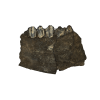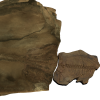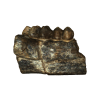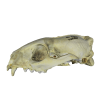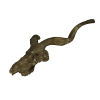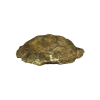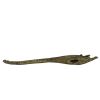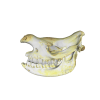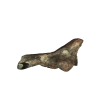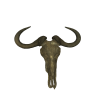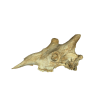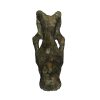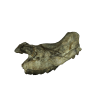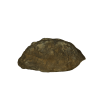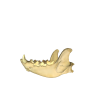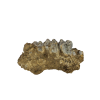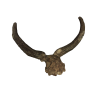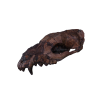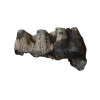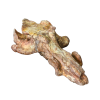This specimen of the Impala Aepyceros melampus was found in Area 131 at East Turkana and dated to 1.9 million years. Only male individuals of Aepyceros melampus have horns and these are distinctively lyrate. Although incomplete this specimen has partial left and right horn cores.
Today there is only one species of impala, Aepyceros melampus, but over the past 7 million years there have been at least three and possibly four species living in East Africa at different times. Impalas are small to medium sized antelopes that inhabit riverine forest glades and bush. These habitats would have been prevalent in the Turkana Basin in the past. These beautiful lyrate horn cores are long and curve backwards in side view in the adult males.







